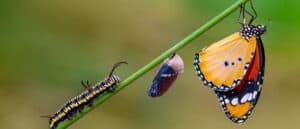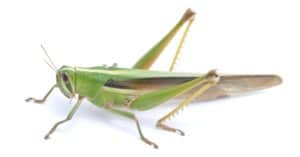Grasshoppers are a group of insects belonging to the suborder caelifera. They are mainly medium to large-sized, depending on the species. Adult grasshoppers are 0.39 to 2.75 inches (1 to 7 cm) long and have large, wide compound eyes that are beautifully colored with a combination of brown, gray, and green to blend into their respective environments. All grasshoppers hatch from eggs, and at each stage, they grow. There are over 11,000 species found all over the continents except Antarctica. Most grasshoppers live in dry open places with adequate grass, though a few live in forests or jungles.
Grasshoppers are all herbivorous – they eat plant leaves, stems, seeds, and flowers and hunt dead insects for protein. Grasshoppers can live for several years, but most die from diseases, predators, drought, or winter. Because grasshoppers are mainly solitary (except during mating season), they quickly fall victim to predators. Since they are easy-to-kill solitary animals, several animals eat them.
Dive with us as we check out the list of their predators below:
Common Grasshopper Predators
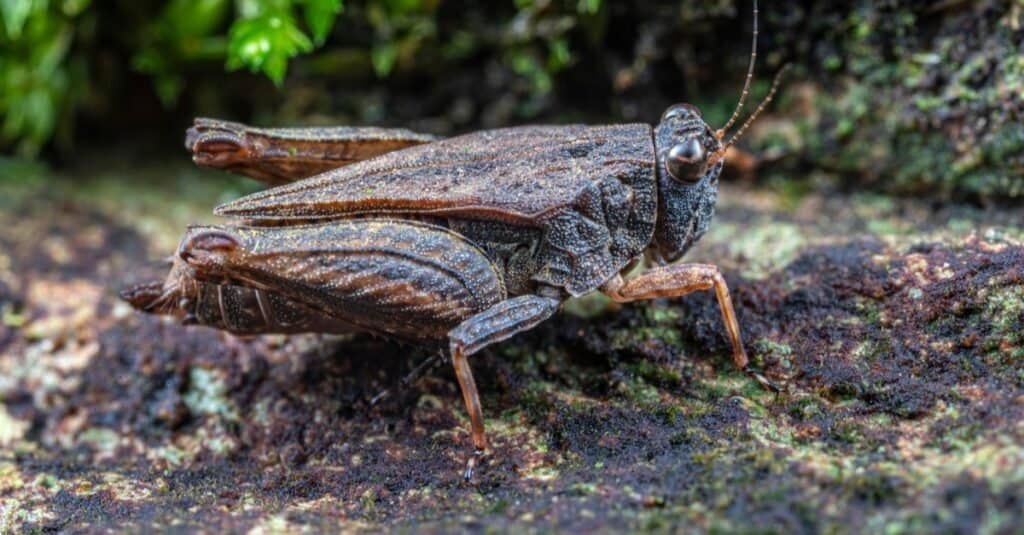
Grasshopper predators include bee-flies,
wasps
, snakes, and lizards.
©Peter Yeeles/Shutterstock.com
Animals like bee-flies, ants, robber flies, wasps, snakes, lizards, and frogs eat grasshoppers. Captivating as it seems, they make a delicious meal for many animals on earth as they get consumed at different stages of their lives.
Here’s a list of grasshopper predators:
- Blackbirds
- blue jays
- Hawks
- Bluebirds
- Bats
- Shrews
- Raccoons
- Red foxes
- Opossums
- Rodents
- Ground beetles
- Field crickets
- Ants
- Robber flies
- Spiders
- Sphecid wasps
- Insects
- Snakes
- Frogs
- Toads
- Newts
- Lizards
Grasshopper Predators: Birds
Birds that eat grasshoppers include blackbirds, blue jays, hawks, and bluebirds.
Blue jays enjoy eating grasshoppers, especially during the summer. Intriguingly, these birds get the maximum nutritional value from these insects since they are excellent protein sources. The fats acquired from grasshoppers also help the blue jay sustain its energy during the breeding season.
Grasshopper Predators: Small Mammals
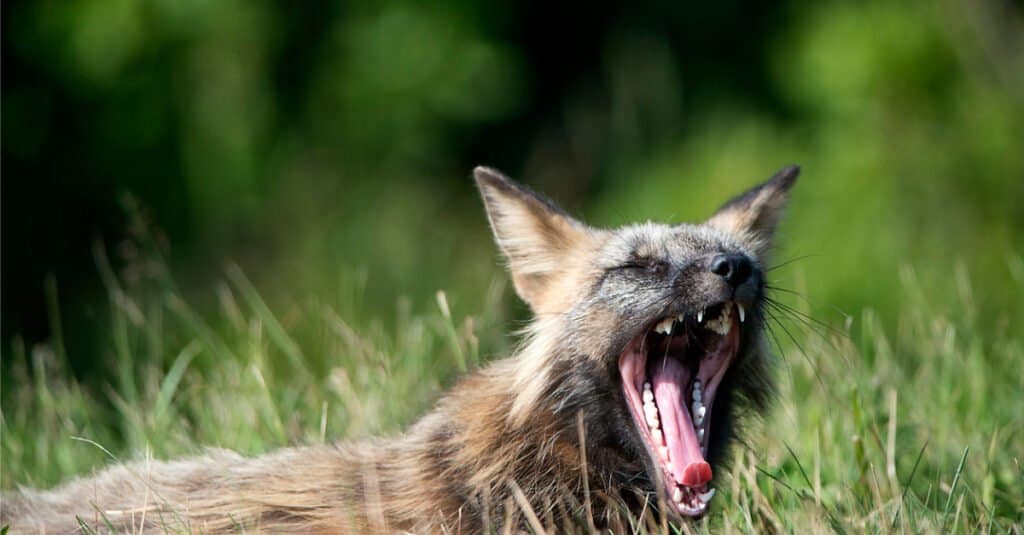
Mammals like red foxes eat grasshoppers.
©iStock.com/Leon Gin
Mammals such as bats, shrews, raccoons, red foxes, opossums, and rodents are known to eat grasshoppers. Most grasshoppers feed at night, and this is surprisingly advantageous to birds like bats – as they often make dramatic swoops toward grasshoppers in the open fields.
The North American shrews hunt grasshoppers and bite off their head, then slowly eat their internal organs.
Raccoons forage and quickly grab grasshoppers using their paws when they are fast asleep. They firmly secure them between their fingers and promptly eat the insects – grinding them between their sharp teeth.
Other small mammals like dogs and cats also eat grasshoppers.
Grasshopper Predators: Insects
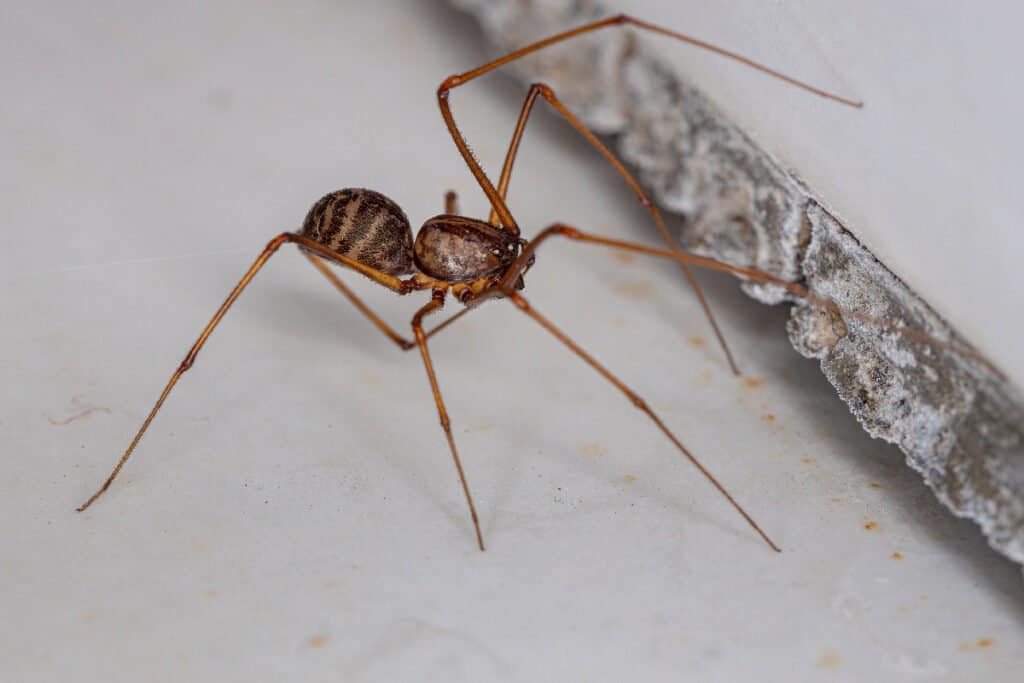
Spider catches prey like grasshoppers with venomous silk that it shoots from its abdomen.
©iStock.com/ViniSouza128
Insects eat grasshoppers at different stages of their lives, including the egg, nymph, and adult. Examples of insects that eat the eggs of grasshoppers include ground beetles, spiders, field crickets, larvae of some blister beetles, and bee flies. Insects that eat grasshoppers at their nymph stage include ants, robber flies, spiders, and sphecid wasps.
The large and powerful insect’s robber fly effortlessly catches a grasshopper by piercing it with its prominent proboscis fashioned into a sharp beak. With the aid of its sharp beak, it injects an enzyme that dissolves the internal organs of the grasshopper and sucks them out.
For wasps, on the other hand, their feeding pattern is different. In their case, they hold their prey (grasshoppers) with their legs, sting to paralyze and prevent the victim from fighting back. As soon as they have a good grip on their game, the wasps start to eat them dead or alive.
Grasshopper Predators: Reptiles and Amphibians
Animals such as snakes, frogs, toads, and newts eat different invertebrates like grasshoppers. In the case of snakes, they catch these grasshoppers through an ambush or sneak attack and gobble them. However, amphibians like frogs majorly swallow their prey alive and whole.
Grasshopper Predators: Humans
Have you ever wondered if humans eat grasshoppers? Here is the answer: grasshoppers are greatly enjoyed in many countries, including Thailand, Mexico, and Uganda. Grasshoppers offer a delicious meal to many humans in different parts of the world. Surprisingly, many people consume grasshoppers without fear due to the many dietary nutrients they are embedded with. They also contain various vitamins, minerals, and calcium properties.
Why Do Farmers Kill Grasshoppers?
Some species of grasshoppers, such as the migratory, differential, two striped, and red-legged grasshoppers, cause damage to most cultivated crops. They primarily damage wheat, alfalfa, soybeans, and corn, and when their population is immensely increased, they eat and seriously damage any crop. Because of this, farmers tend to drive them away from their farms by applying different chemicals and control products like garlic spray, hot pepper wax, neem oil, and diatomaceous spray.
Do Grasshoppers Defend Themselves From Predators?
Grasshoppers are relatively defenseless compared to some other insect groups. Unfortunately, they don’t possess stingers or venom and usually don’t fight their predators. However, instead of attacking their predators, they run and hide. Most grasshoppers run by a hop and a skip strategy, and when it comes to hiding, their green and brown colors help them fade into the background in long grasses. Some other species also have the gliding ability to escape from their predators.
How Do You Differentiate a Female from a Male Grasshopper?

Male grasshoppers have brighter colors than females.
©iStock.com/Eileen Kumpf
In some grasshopper species, males have brighter colors than their female counterparts and often attract females with unique structures on their wings.
Female grasshoppers are relatively larger than males in all ramifications. By structure, their abdomen is designed to lay eggs underground. A few species intentionally get toxic substances into their bodies from poisonous plants they eat to protect themselves from predators. They also regurgitate some contents from their stomach to ward off intruders.
Other fascinating facts about Grasshoppers
- Many grasshoppers pass on information to one another through sounds and sight.
2. They hear through their bellies – however, they cannot differentiate pitch well.
3. They have the same destroying abilities as a locust.
4. They are easily affected by parasites.
The photo featured at the top of this post is © iStock.com/Sudhakar Bisen
Thank you for reading! Have some feedback for us? Contact the AZ Animals editorial team.



